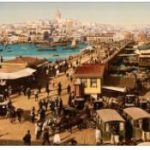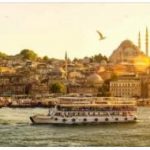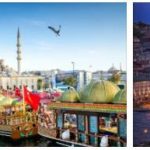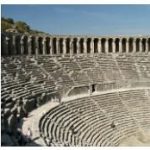The area of today’s Turkey has been populated since the Stone Age (Çatal Hüyük). In antiquity, various empires ruled the region: the Hittites , Lydians, Persians, and some important Greek city-states (e.g. Ephesus) were located in what is now Turkey. In the 4th century BC In BC Alexander the Great defeated the Persian Empire and ruled over large parts of what is now Turkey. After Alexander’s death, his empire fell apart, including the great empire of the Seleucids. This was in the 2nd century BC. Defeated by the Romans. In 330 AD, Emperor Constantine I, the Great, moved the Roman capital from Rome to Byzantium (now Istanbul), which he renamed Constantinople.
After the Roman Empire was divided in AD 395, Constantinople remained the capital of the Eastern Roman (Byzantine) Empire. From the 11th century onwards, Islamic Turkic peoples from Central Asia pushed their way into present-day Anatolia. The Ottoman Empire developed from their small principalities in the 14th century. In 1453 Constantinople was taken. In the 16th century, the Ottoman Empire was a world power that included parts of North Africa, all of the Middle East, parts of Iraq and the Arabian Peninsula, the Balkans and Greece.
The 19th century was marked by foreign and domestic political crises. Independence movements, especially in the Balkans, weakened the multi-ethnic state.
Increasingly, major European powers threatened the empire who wanted to assert their strategic interests. The former great power became the “sick man on the Bosporus”. Domestically, nationalist movements gained in importance. Their goal was to create a modern nation-state with its own constitution , regardless of ethnic and religious differences. After a failed attempt at reform in 1876, the opposition movement of the Young Turks forced the introduction of a constitution in 1908, which remained in force until 1918.
The Young Turks led the Ottoman Empire on the side of Germany in the First World War in 1914, which ended in defeat in 1918. Domestic political tensions and territorial losses led to the fact that the Young Turkish government became radicalized and Turkish nationalism intensified. The Armenians, who were expelled and forcibly resettled, also suffered. According to different estimates, between 800,000 and 1.5 million people lost their lives.
After the defeat in World War I, the Ottoman Empire was almost completely divided among the victorious powers. National resistance to the peace treaty led to the Turkish War of Liberation (1919-1923). General Mustafa Kemal Pascha , later called Ataturk (“Father of the Turks”), proclaimed the Republic of Turkey in October 1923 and became its first president.
His reign was marked by extensive reforms with the aim of creating a state based on the European model (Kemalism). This included the separation of state and religion (secularism), the democratization of the country and the introduction of the Latin script instead of the Arabic one. Ataturk introduced women’s suffrage in 1935 and put women on an equal footing with men in court. Turkey under Ataturk was a one-party state. It was not until 1946 that Turkey switched to a multiparty system.
In World War II , according to aceinland, Turkey was broadly neutral. It was not until 1944 that she entered the war against Germany. After the war she was one of the 51 founding members of the UN. After 1945, the country oriented itself to the west and finally turned against the Eastern Bloc when it joined NATO in 1952. Turkey has occupied the northern part of Cyprus since 1954, the “Turkish Republic of Cyprus” is not internationally recognized. The Kurdish conflict has played an important role in Turkey since the 1980s.
Domestically, the conflict between the military and politics shaped Turkey after 1946. Since the founding of the Republic of Turkey, the military also had a political role. His self-image as guardian of the constitution and as defender of Ataturk’s legacy has led to repeated coup attempts by the military since the Second World War (1960, 1971, 1980, 2016). After the military coup in 1980, the military dictatorship only ended two years later. The coup led to a shift in politics to the right. The AKP around the later President RT Erdoğan emerged from the Islamist movement. It was also founded to meet the military’s requirement to completely separate religion and state. The AKP repeatedly tried to curtail the power of the military. An attempted coup by the military failed in 2016 and led to a further shift to the right that abolished parliamentary democracy in Turkey in 2017.
In a referendum, the population narrowly approved a constitutional amendment that introduced a presidential system. The president is the most powerful man in the state. In 2018 Erdoğan was elected as the first president under this constitution.









